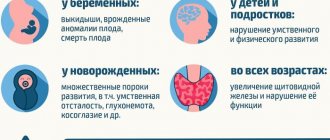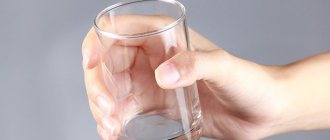Calcium diet: when and to whom is it recommended?
Calcium diet: when and to whom it is recommended
The calcium diet helps provide the body with an increased amount of calcium in cases where there is a reasonable need for it.
therapeutic diets, elderly people (60-75 years old), old people (75-90 years old), pregnancy, women, children, calcium
One of the main reasons for prescribing a calcium diet is a noticeable deficiency of this macronutrient in the body. Often, such a diet is indicated for people who, for various reasons, are at risk of developing a deficiency of this element. Self-administration of a calcium diet without a doctor’s recommendation is undesirable - an excess of calcium in the body will have negative consequences for health.
Harry Benjamin's fairly radical calcium diet is well known. According to this diet, you need to drink a glass of milk every 30 minutes. In addition to milk, you can consume small amounts of prunes and eat fresh vegetables and fruits. There is no scientific data on the benefits of such a diet, but its imbalance is obvious.
Diet and dietary features for osteoporosis
Causes of calcium leaching and bone loss may include:
- genetic predisposition;
- bad habits (alcohol, smoking);
- disruptions of metabolic processes in the body and weight gain;
- inactive lifestyle and sedentary work;
- improper and inadequate nutrition;
- environmentally unfavorable habitat, etc.
Most often, osteoporosis occurs in women, and another common root cause of the development of the disease can be hormonal changes in the body after menopause. Severe changes in bone structures and a decrease in their density can lead to sudden fractures and cracks while performing the most ordinary daily activities.
The first signs of osteoporosis are chronic aching pain in the spine and joints, stiffness of movement, sudden stooping, general malaise and fatigue. Although in some cases the pain syndrome does not manifest itself noticeably, and the patient for a long time may simply not even be aware of the existence of a compression fracture of the spine.
Thus, when the first signs of the disease appear, you should not postpone a visit to an osteopathy clinic, an orthopedist, an osteoporosis center, a vertebrologist or a traumatologist. By taking an X-ray of the spine, taking tests for calcium and phosphorus levels in the blood, and undergoing densitometry (determining the density of bone tissue), it will be possible to more accurately diagnose the disease and prescribe appropriate treatment for osteoporosis.
General recommendations for the treatment of osteoporosis
The main treatment for osteoporosis is a special diet. The correct selection of food products, drug treatment, long walks in the fresh air and under the rays of the sun can improve the condition of the bone structures of the body and improve the patient’s quality of life. In this case, the effect of all medicines and food products is aimed at increasing the calcium content in the blood, restoring normal metabolism and improving the physical health of the patient.
General recommendations for the treatment and prevention of osteoporosis:
- Excluding or limiting the consumption of foods that contain caffeine or remove calcium and its compounds from the body (coffee, chocolate, strong tea, cola, cocoa, etc.).
- Exclusion from the diet or limiting the consumption of foods containing fatty acids (mayonnaise, butter, margarine).
- Limit the consumption of fatty meat (pork), as it interferes with the absorption of calcium in the body.
- Increase the quantity and diversify your diet with foods containing large amounts of calcium (almonds, sesame seeds, other nuts, cottage cheese, lactic acid products, cabbage, spinach, greens, etc.).
- Add to your diet or increase your consumption of foods containing vitamin D3 (eggs, cheese, sour cream, cheese, fish, liver, fruits, vegetables); Spend more time outdoors and sunbathe.
- Avoid drinking alcohol, smoking, taking diuretics and hormonal drugs, carbonated drinks and water.
- You should include complexes of vitamins and microelements in your diet (B vitamins, zinc, magnesium, phosphorus, fluorine, selenium, folic acid, etc.), or replace them with appropriate foods (celery, greens, seafood, legumes, cereals, grains, bananas , nuts, etc.).
- It is recommended to drink plenty of fluids (plain water) and freshly squeezed juices (two to three glasses a day). Suitable for juices: carrots, beets, sour apples, berries, tomatoes, herbs.
You should eat small portions 5-6 times a day. A healthy and nutritious diet is not the only treatment for the disease. To give strength to the body, it is advisable to actively engage in sports (swimming, aerobics, yoga) or at least attend a “health group” or exercise therapy.
In this case, diet, drug treatment, and physical activity must be agreed upon with the doctor treating osteoporosis. Physical exercises in the initial stages of treatment should be carried out under the supervision of a doctor or physical therapy instructor to avoid excessive stress and pathological fractures of the vertebrae and limb bones. Remember, self-medication can lead to deterioration of health and cause irreparable harm to the body.
Sample diet in the first stages of osteoporosis treatment
The first day.
Breakfast.
Oatmeal (120-150 g), cooked in milk with a small percentage of fat. Dried apricots (5-6 large fruits or 7-8 smaller ones), kernels (3-4) walnuts. Dried apricots and nuts can be added to porridge or eaten separately. Freshly squeezed orange juice (approximately 150-200 ml).
Lunch.
Cottage cheese with a low fat content (60-100 g), fruits - approximately 100-150 g (apples, grapes, berries).
Dinner.
Vegetable soup without frying (100-120 ml), bread with bran (1-2 pieces). Salad of lettuce, spinach, herbs, 2 tomatoes, dressed with olive oil and 1 teaspoon of sesame seeds.
Afternoon snack.
1 cup low-fat yogurt, a medium apple and a medium carrot.
Dinner.
Spaghetti with chicken meat. Durum wheat spaghetti (100 g), spinach (50 g), grated hard cheese about 30 g. For the sauce, fry 120-150 g of chicken breast in olive or corn oil. Squeeze out a clove of garlic, add broccoli, tomatoes, bell peppers, and herbs. For a snack 2-3 pcs. dried apricots, 5 pcs. almonds
Second day.
Breakfast.
Cottage cheese, low fat 50-60 g, with sesame seeds and prunes, bagel. A small bunch of green grapes, 1 glass of fresh juice from apples, carrots and an orange.
Lunch.
Yogurt, kefir or yogurt with a low fat content (100-150 g), fruit - approximately 100-150 g.
Dinner.
Bean soup or beet soup without frying (100-120 ml), wholemeal bread (1-2 pieces). Salad of cucumbers, peppers, herbs, soft cheese, dressed with about 150g olive oil.
Afternoon snack.
1 glass of low-fat milk, bun with nuts and honey.
Dinner.
Boiled rice with vegetables or baked potatoes with peel (100-150 g). Baked or boiled fish approximately 100-150 g. Lettuce leaves, tomatoes 1-2 pcs.
The recommended diet plan is not a standard and can be changed by the attending physician depending on the degree of the disease, the characteristics of the body and the patient’s intolerance to certain foods.
Author: K.M.N., Academician of the Russian Academy of Medical Sciences M.A. Bobyr
Importance of calcium diet
Features of calcium absorption Calcium deficiency can be caused by various reasons. As a rule, it is not associated with a lack of calcium-containing foods in the diet, but with disturbances in the process of calcium absorption. It is known that the full absorption of calcium is associated with the presence in the body of a sufficient amount of substances such as magnesium, phosphorus, potassium, vitamin D, vitamin C, inulin, and unsaturated fatty acids. At the same time, an excess of the same magnesium, as well as zinc, phytin, oxalic acid, tannins and proteins interferes with the absorption of calcium.
Disturbances in the functioning of the stomach, intestines, gallbladder, and liver impair the absorption of calcium, so for a number of diseases of these organs, doctors recommend a calcium diet.
Periods of increased need for calcium The need for calcium increases with age, since the rate of its leaching from the body increases, and the absorption process, on the contrary, worsens. Calcium deficiency is observed in the vast majority of people over 60 years of age.
Pregnancy and breastfeeding, childhood are the times when a sufficient amount of calcium in the body is vital. Heavy physical activity, professional sports, sudden weight loss, stress, and alcohol abuse can also cause increased calcium loss, so in these situations a calcium diet can be useful.
A calcium diet is recommended for dental treatment (wearing braces, etc.) and for maintaining cardiovascular health.
Daily norm
The daily need for calcium directly depends on the age and gender of a person. Moreover, the largest amount of macronutrients is required by a growing body, pregnant and lactating women.
The daily value of calcium is:
- for newborns up to 6 months – 400 milligrams;
- for preschool children (1 – 5 years) – 600 milligrams;
- for schoolchildren under 10 years old – 800 milligrams;
- for children from 10 to 13 years old – 1000 milligrams;
- for teenagers and young people under 24 years old – 1300 – 1500 milligrams;
- for women (from 25 to 55 years) and men (from 25 to 65 years) – 1000 milligrams;
- for women during menopause (from 55 to 85 years old) and older men (from 65 to 85 years old) – 1300 – 1500 milligrams;
- for pregnant and lactating women – 1500 – 2000 milligrams.
The need for calcium increases with:
- intense sports activities;
- profuse sweating;
- taking anabolic steroids;
- hormonal therapy.
Remember, it is important to monitor the amount of calcium consumed daily, since a lack of the mineral can lead to osteoporosis of the bones, and an excess can lead to stone formation in the kidneys and bladder.
Principles of calcium diet
- increased consumption of foods rich in calcium;
- reducing the consumption of foods that interfere with the absorption of calcium;
- consumption of foods containing substances that promote the absorption of calcium;
- sufficient fluid intake (at least 1.5 liters per day);
- eating a normal amount of protein (amino acids are necessary for calcium absorption);
- increased consumption of vegetables and fruits (mainly for the sake of calcium itself, as well as potassium, which reduces the excretion of calcium from the body).
Sources of calcium
Strong base
Women & calcium
- Calcium-rich foods have been clinically proven to help relieve symptoms associated with PMS.
- 5% bone mass is lost annually at the onset of menopause. At this time, the body rapidly reduces the production of estrogen, which promotes the accumulation of calcium in the bones.
- 14 million people in Russia suffer from osteoporosis, a disease in which bones become porous and brittle. Of these, 80% are women.
Calcium is the main component of the inorganic basis of the skeleton, and it is needed to keep bones and teeth strong and healthy. However, this macronutrient is also necessary for:
- regulation of the blood clotting process;
- ensuring muscle activity, including myocardial contractions;
- nervous system;
- important intracellular and intercellular processes;
- proper functioning of enzymes and hormones.
In order for all these mechanisms to work without failure, you should provide yourself with the necessary amount of calcium.
Source of calcium
White chalk
There is an opinion that the most reliable sources of calcium are chalk and eggshells. They do have this macronutrient, but mainly in the form of an insoluble salt - calcium carbonate, which is practically not absorbed.
The most reliable source of calcium is dairy products. In them, this element is in the form of lactate, which is easily absorbed and almost all of it goes to its intended purpose. One glass of milk covers almost a third of the daily calcium requirement, and 100 g of cheddar cheese satisfies it completely. If you want to reduce your fat intake, you can switch to skim milk - it contains no less calcium than regular milk.
By the way
If you do not tolerate lactose well, lean on sesame seeds rich in calcium: 100 g is the daily requirement of this useful element.
Poorly learned
60% Calcium from food is absorbed by the body of children and adolescents. And only 20% are adults over 21 years old.
In combination with certain substances, for example, oxalic and phytic acids and sugar, calcium is absorbed with great difficulty. Oxalic acid is found in calcium-rich chard, spinach and broccoli, and black tea that does not contain it, phytic acid is found in legumes, oatmeal and bran. So it turns out that cottage cheese with sugar, tea with cream or oatmeal with milk are tasty dishes, but from the point of view of calcium absorption they are rather stupid.
By the way
Caffeine interferes with calcium absorption. 2-3 cups of coffee a day won't hurt, but if that's not enough for you, drink at least half a glass of milk for every additional cup.
Keep balance
Vitamin D is necessary for the absorption of calcium. It helps transport this macronutrient into the blood. Most of vitamin D is formed in the skin under the influence of sunlight, a smaller part comes from food: fatty herring, mackerel, salmon from a can, egg yolk, butter. Don't give up these foods and get out in the sun as often as possible.
By the way
If there is a deficiency of magnesium and phosphorus, the calcium eaten will be useless. To prevent this from happening, eat more foods that contain these elements in the correct proportions. Ideal in this regard are cottage cheese, eggs, fresh herbs and some types of fish (for example, horse mackerel).
Author: Anna Fedorova Published: March 15, 2016
Calcium diet products
- First of all, a calcium diet involves increased consumption of milk and dairy products. Digestible calcium is found in yogurt, cottage cheese, and cheeses. At the same time, these products help normalize the intestinal microflora, which is necessary for the absorption of calcium.
- Soy products (such as tofu) also contain adequate amounts of absorbable calcium.
- An excellent source of calcium is some types of fish, canned fish and seafood: shrimp (110 mg/100 g), sardines in oil (420 mg/100 g), sprat, anchovy (350–410 mg/100 g). But river fish with small bones contains only about 10–20 mg of calcium per 100 g of its own weight.
- Some vegetables are rich in calcium, especially celery and olives, lettuce, and various types of cabbage.
- There is a lot of calcium in dried apricots, raisins, almonds, sesame seeds, pumpkin seeds and some other dried fruits, seeds, and nuts.
- Rice contains digestible calcium. Among cereals, semolina is the most neutral in relation to the absorption of calcium.
Calcium is a building material for bone tissue. Therefore, it is very important to ensure adequate dietary calcium intake for the prevention or treatment of osteoporosis. For women after menopause and for men over 50 years of age, the daily calcium requirement is 1300-1500 mg. At a younger age, the daily calcium requirement is 1000 mg. Up to 80% of your daily calcium intake can come from dairy products. It is very simple to follow the recommendation of the Institute of Nutrition of the Russian Academy of Medical Sciences - just eat three servings of dairy products daily. Experts note that nutrition should be as varied as possible. Include in your diet not only yogurt, cottage cheese and kefir, but also other dairy products (yogurt, fermented baked milk, cheese, etc.).
The amount of calcium consumed in food per day can be calculated using the table below (foods with the highest calcium content are shown here).
Calcium content in food (per 100 g of product)
| Food product | Calcium (mg) |
| Milk or any fermented milk products | 120 |
| Ice cream | 100 |
| Plain yogurt | 200 |
| Fruit yogurt | 136 |
| Hard cheese (Cheddar, Eddam, etc.) | 750 |
| Swiss cheese | 850 |
| Soft cheese (like Brie) | 260 |
| White chocolate | 280 |
| Milk chocolate | 220 |
| White bread | 170 |
| Black bread | 100 |
| Sardines in oil (with bones) | 500 |
| Canned salmon (with bones) | 85 |
| Sprats in oil (canned) | 300 |
| Sesame | 1474 |
| Halva | 670 |
| Almond | 230 |
| Tahini halva | 824 |
| Cottage cheese 5% | 164 |
| Rice (cooked) | 230 |
| Egg 1 medium | 55 |
The most calcium is found in dairy products. One liter of milk or kefir contains the daily requirement of calcium. To calculate your daily calcium intake from food, you can use the following formula:
Daily calcium intake (mg) = dairy calcium (mg) + 350 mg
With your diet you need to gain 800-1000 mg of calcium per day. In addition to calcium, a sufficient supply of vitamin D is necessary. Vitamin D plays an important role in bone formation by increasing calcium absorption. In conditions of long winters, contraindications and restrictions on sun exposure for medical reasons, the production of vitamin D practically stops. The requirement for vitamin D for men and women over 50 years of age is 800 IU per day.
To prevent osteoporosis, it is enough to follow a diet rich in calcium, adding vitamin D in the form of drops (AKVADETRIM - colecalciferol) 14 drops once a week.
If a diagnosis of osteoporosis is established, the doctor often prescribes drugs that normalize bone turnover. To treat osteoporosis, it is necessary to add calcium and vitamin D supplements, since the need for calcium and vitamin D increases significantly.
If the daily intake of calcium from food is about 800-1000 mg, then it is enough to add 1-2 capsules containing calcium carbonate in a dose of 500 mg.
Prohibitions and restrictions
You should exclude from your diet foods that contain substances that interfere with the absorption of calcium or enhance its excretion. This primarily applies to alcoholic beverages, coffee, carbonated drinks, refined sugar and table salt. Sorrel and spinach, rich in oxalic acid, should also be excluded.
It is undesirable to consume large amounts of grains, cereals, nuts, and legumes that contain phytin. Bran, oats, peanuts, bread, beans and peas should be consumed in small quantities. Excess protein leads to impaired absorption of calcium, so there should not be too much of these nutrients in the diet.
Nuances
- It is advisable not to drink liquids rich in caffeine and tannins. Preferred water is slightly acidified with lemon, mineral (calcium) water, fruit juices (for example, orange).
- Vegetables and fruits should be consumed raw whenever possible.
- There are no special recommendations on cooking methods, food temperatures and diet - it is enough to follow the general recommendations for a healthy diet.
Expert: Natalia Dolgopolova, general practitioner Author: Natalia Bakatina
The material uses photographs belonging to shutterstock.com











